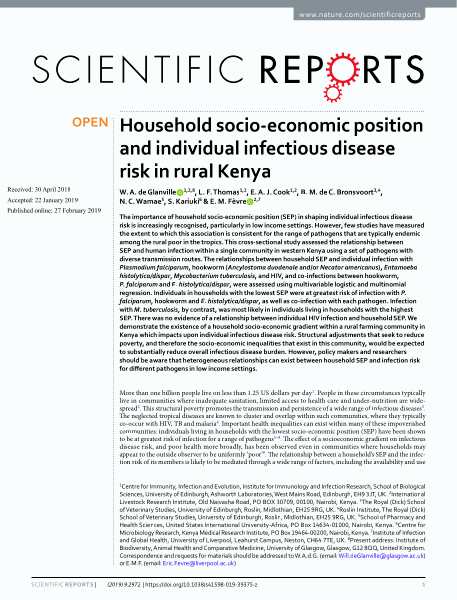Household socio-economic position and individual infectious disease risk in rural Kenya
Abstract
The importance of household socio-economic position (SEP) in shaping individual infectious disease risk is increasingly recognised, particularly in low income settings. However, few studies have measured the extent to which this association is consistent for the range of pathogens that are typically endemic among the rural poor in the tropics. This cross-sectional study assessed the relationship between SEP and human infection within a single community in western Kenya using a set of pathogens with diverse transmission routes. The relationships between household SEP and individual infection with Plasmodium falciparum, hookworm (Ancylostoma duodenale and/or Necator americanus), Entamoeba histolytica/dispar, Mycobacterium tuberculosis, and HIV, and co-infections between hookworm, P. falciparum and E. histolytica/dispar, were assessed using multivariable logistic and multinomial regression. Individuals in households with the lowest SEP were at greatest risk of infection with P. falciparum, hookworm and E. histolytica/dispar, as well as co-infection with each pathogen. Infection with M. tuberculosis, by contrast, was most likely in individuals living in households with the highest SEP. There was no evidence of a relationship between individual HIV infection and household SEP. We demonstrate the existence of a household socio-economic gradient within a rural farming community in Kenya which impacts upon individual infectious disease risk. Structural adjustments that seek to reduce poverty, and therefore the socio-economic inequalities that exist in this community, would be expected to substantially reduce overall infectious disease burden. However, policy makers and researchers should be aware that heterogeneous relationships can exist between household SEP and infection risk for different pathogens in low income settings.

